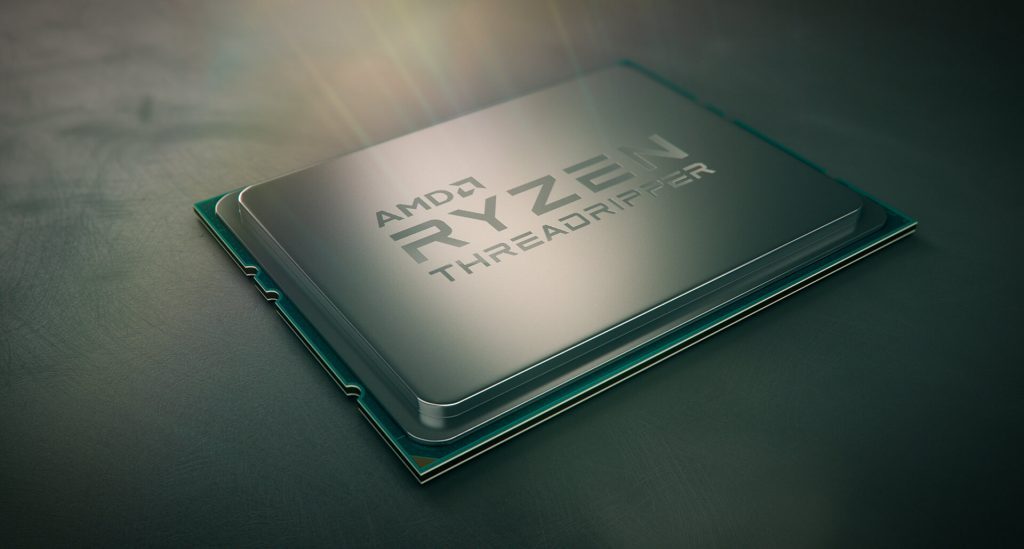AMD is tearing up the CPU world at the moment with the release of its Threadripper line, with the Ryzen Threadripper 1900X launched just last week. The high-end processors have an interesting history, with Threadripper not actually being a part of AMD’s original chip strategy but a ‘skunkworks’ project by a small group of AMD engineers.
The history became apparent when Forbes interviewed AMD employees that were involved with Ryzen’s journey.
“It's not really a story of roadmaps and long-term planning or huge R&D budgets – it's a lot more personal than that and stemmed from a skunkworks project and a small group of AMD employees who had a vision of a processor they'd really want in terms of a high-performance PC,” AMD’s communications team member Sarah Youngbauer from told Forbes.
“They worked on it in their spare time and it was really a passion project for about a year before they sought the green light from management, which is quite unusual – it was something they really cared about.”
It was this early effort on Threadripper that brought the high-end Ryzen CPU to life several years later.
AMD’s senior product manager James Prior continued on from Youngbauer’s point. “Myself and a few others were in a very cross-functional team that get together for various different projects and as we got the first hints of what the Zen core performance and efficiency were like and started looking at the internal roadmap, which is a constantly changing thing and noticed a gap between Ryzen and EPYC.”

“So we put together this skunkworks team where we had platform architects, people that deal with core design, business unit, marketing team, to work out how to use what's already here and to go to the boss – Jim Anderson and say we'd like to do this.”
And sure enough, ex-Intel employee and AMD Senior Vice President and General Manager Jim Anderson was on board.
“I thought it was fantastic! I was really blown away when we worked out we could actually build it – I came into the industry as a CPU architect and it was the kind of product I'd love to build,” Anderson told Forbes. “I asked for two things – the specifications and also how quickly we could build it. I fell in love with it seeing the specifications, but the timeline was disappointing as it originally pointed at 2018 for launch. I immediately asked them to pull it in by about a year – so summer 2017.”
Interestingly, Anderson was told about it during his journey to Computex in a by-chance situation. “We found out he was an actual CPU enthusiast, this was perfect for taking the project forward,” Prior recalls. “My boss was sharing a taxi with Jim on the way to Computex 2016 and mentioned Threadripper to him then. He loved it, gave it the green light and found a way to get it on the roadmap.”
KitGuru Says: With Threadripper being the giant it is for the company right now, it’s odd to think that it might never have been with such an unconventional journey. The CPU line has definitely shaken things up a little on the higher end and I’m looking forward to seeing what AMD is capable of way down the line.
 KitGuru KitGuru.net – Tech News | Hardware News | Hardware Reviews | IOS | Mobile | Gaming | Graphics Cards
KitGuru KitGuru.net – Tech News | Hardware News | Hardware Reviews | IOS | Mobile | Gaming | Graphics Cards



perhaps why no money for Vega
Well, I’d imagine it doesn’t take a large team to get two Ryzen dies and glue them together…
Low IQ comments from Intel employees.
BTW Intel is looking closely at the glued processor system, because they tried with the dual core and quad core 2+2 and failed…..
Now since amd perfected the so called “infinite glue” Intel wants it too.
Btw Intel tried to buy the use of the AMD APU patents and got a big fat no from AMD.
Intel spits on amd when they released new products…now they are looking at them much more closely.
Wow if this is actually how Thread Ripper was born it is a amazing idea and makes for a good story.
The Rome Threadripper should be 24 cores… OUCH…
RX Vega wasn’t the emphasis because they need high ASPs to pay for all of this stuff… Frontier, WX, Pro SSG and Instinct…
I’m surprised there was even a team, other than marketing, how much work is needed to re-brand and unlock an Epyc?
Plus, Vega is more optimized for Servers right now.
Driver updates and use of other features should unlock more performance for Vega and get it up to or close to 1080ti level.
Plus, undervolting Vega 56 and 64 really helps in terms of lowering power consumption.